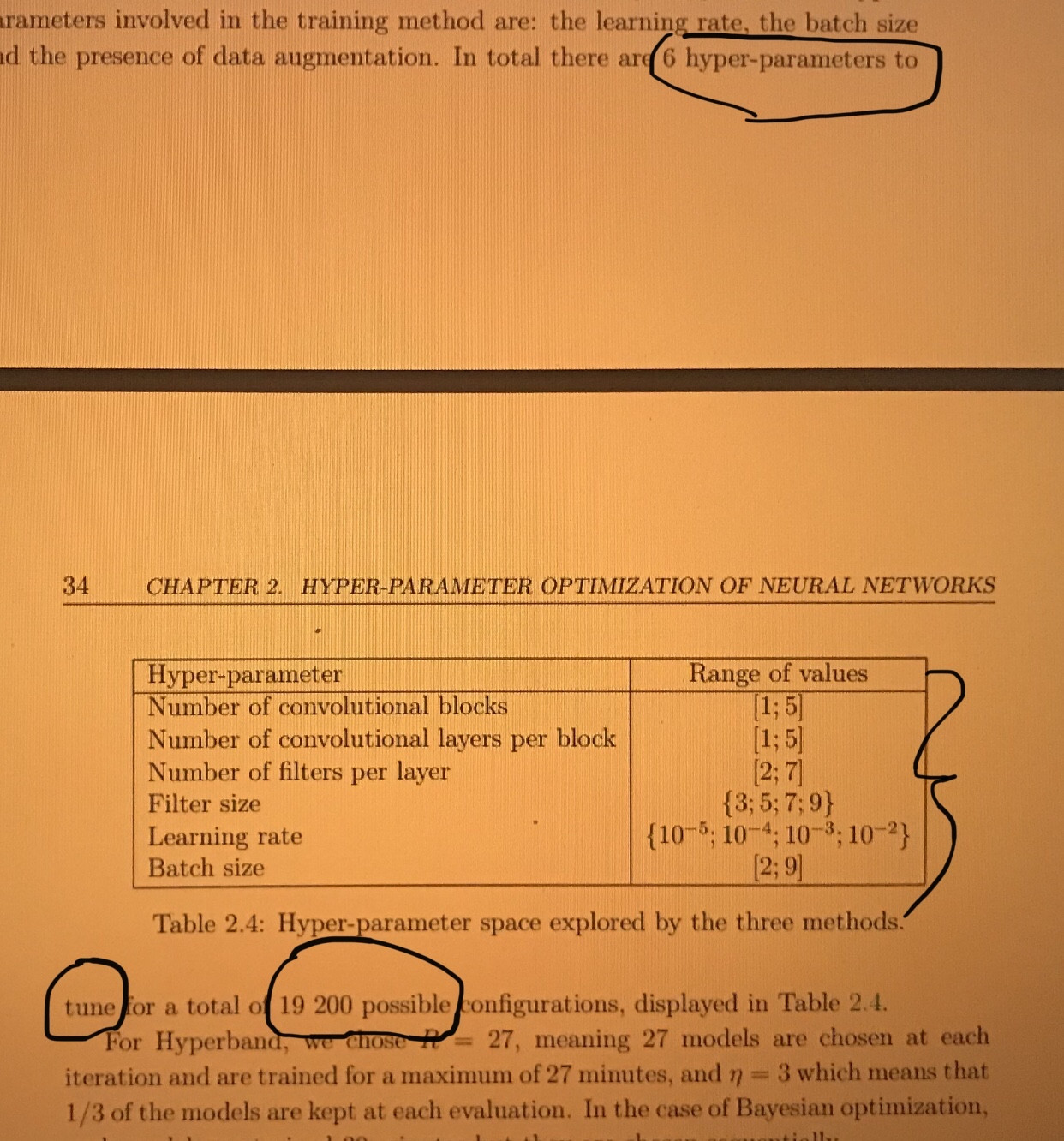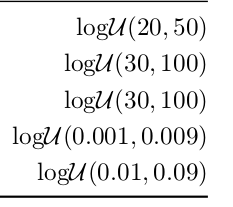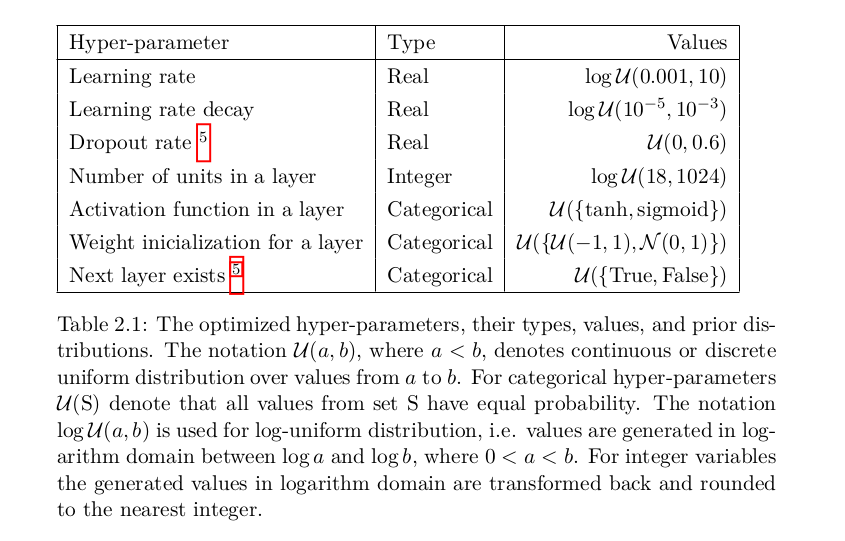I am wondering how did they get the $19200$ possible configurations? Like, $5^6 = 15625$, where $6$ is the number of hyper-parameters:
ps: just to check I'm doing the righ thing. Is this okay? The formula is $[a,b]: b -a + 1$. So in the second screenshot, the total number would be $31 \times 71 \times 71\ \times\ 9 \times 9 = 12.657.951$ possible configurations?



